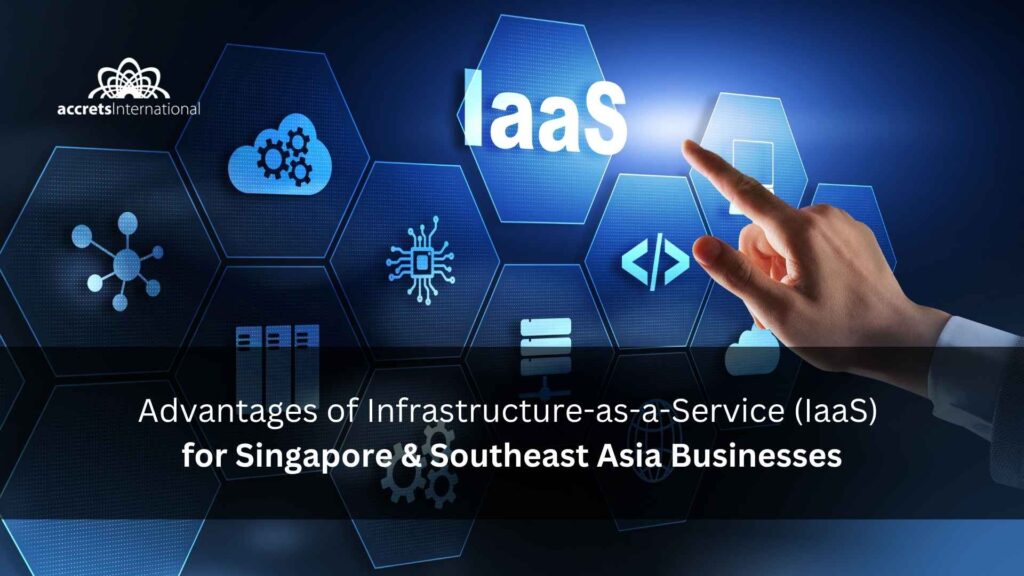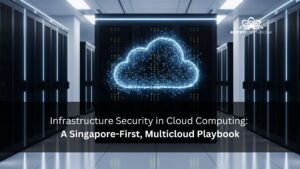Infrastructure-as-a-Service (IaaS) empowers businesses in Singapore and Southeast Asia to scale rapidly, optimize costs, and meet local compliance requirements. In this guide, we explore its key advantages, including cost flexibility, regulatory alignment, high availability, and performance benefits. By the end, you will clearly understand how IaaS can transform your operations and why many leading companies are moving to this model. Let’s walk through each benefit step by step and discover how it can fit into your business strategy.
Table of Contents
ToggleWhat Exactly Is IaaS?
IaaS delivers raw compute, storage, and networking over the internet so that you can spin up virtual servers in minutes instead of months. If you need a refresher on how it differs from Platform-as-a-Service, explore our detailed comparison of the difference between Platform and Infrastructure as a Service.
The Seven Core Advantages at a Glance
- Predictable OPEX vs. lumpy CAPEX
- Elastic scalability for volatile ASEAN markets
- High availability & disaster recovery baked in
- Regulatory compliance and data sovereignty
- Performance edge thanks to Singapore’s connectivity hub
- Faster innovation via Infrastructure-as-Code & AI workloads
- Sustainability gains aligned with the Green Plan 2030
Below, we unpack each advantage with local context, real numbers, and action steps.
1. True Cost Visibility & OPEX Flexibility
Old-school server rooms drain capital and hide costs, such as real estate, cooling, and refresh cycles. With IaaS, you pay for vCPU-hours and gigabytes-used, converting capital expenditure into transparent operational expense.
TCO Snapshot: A mid-tier Singapore SME migrating 50 VMware VMs to IaaS cut upfront hardware spend by 68% and shaved 22% off annual maintenance.
Unlike traditional IT infrastructure management services, IaaS lets finance teams forecast costs weekly and tap IMDA’s Digital Resilience Bonus for cloud adoption. You can even plug hourly billing directly into ERP systems for granular charge-back.
2. Effortless Scalability for Volatile ASEAN Demand
Singles-Day sales, Ramadan flash-deals, or Indonesia’s Independence Day campaigns can spike traffic 10× overnight. IaaS auto-scales workloads across multiple availability zones without human intervention.
Latency Map: Singapore → Malaysia – 1.8 ms | Singapore → Jakarta – 11 ms
Hybrid scenarios also flourish; you might keep sensitive data in an on-premise private cloud while bursting seasonal workloads to IaaS. Either way, capacity becomes an API call, not a procurement nightmare.
3. Built-in High Availability & Disaster Recovery
PDPA and MAS Technology Risk Management (TRM) guidelines insist on resilient architectures. Multi-AZ IaaS delivers 99.99% uptime and geo-redundant snapshots as table stakes.
A retail chain running point-of-sale on IaaS in Singapore and a warm standby in Kuala Lumpur met a 30-minute RTO without secondary data-centres. For turnkey protection, IT DR-as-a-Service wraps orchestration and compliance reporting around native IaaS replication.
4. Compliance & Data-Sovereignty by Design
Singapore’s PDPA, the Cybersecurity Act, and sector-specific rules (think MAS Notice 655) now drive cloud architectures. Leading IaaS providers publish compliance blueprints out-of-the-box.
Public-sector teams eyeing GovTech workloads should review GCC—Government Cloud Singapore which layers IM8 controls on top of commercial IaaS. For cross-border flows, choose regions that keep primary data inside ASEAN while replicating read-only copies abroad.
5. Performance Edge from Singapore’s World-Class Connectivity
Ten under-sea cables land in the Lion City, making its data-centres the regional low-latency core. Gamers in Bangkok or mobile users in Ho Chi Minh City routinely see sub-40 ms round-trip times to SG IaaS zones.
To push the envelope, high-speed overlays such as the Teridion Connectivity Solution accelerate SaaS traffic globally and even handle tricky China cross-border routing.
6. Accelerated Innovation with Infrastructure-as-Code & AI Workloads
Modern DevOps teams treat infrastructure like code, version-controlled, peer-reviewed, and rerunnable. Using tools such as Terraform or AWS CDK, you can template entire environments in minutes, then tear them down just as quickly.
Curious where Infrastructure-as-Code fits next to virtual servers? Read our side-by-side on Infrastructure-as-Code vs. IaaS.
AI/ML experiments also thrive; spot instances slash GPU costs by 70%. Governance is crucial, so see our deep dive on AI model governance in 2025 for best-practice guardrails.
7. Sustainability & Green Mark Certifications
Singapore’s Green Plan 2030 caps new data-centre deployment unless facilities meet aggressive efficiency targets. Major IaaS sites already boast PUE below 1.3 and deploy liquid cooling plus renewable-energy PPAs.
Carbon Check: Migrating 100 on-prem servers to an SG IaaS zone avoids roughly 180 tCO₂e annually, the equivalent of 39 passenger cars.
Sustainability reports can be exported for ESG auditors, giving you both environmental and regulatory wins.
Choosing the Right IaaS Partner in Southeast Asia
A neutral lens matters. Here’s a quick-fire checklist:
| Criterion | AWS (ap-southeast-1) | Azure (Singapore) | Google Cloud (Singapore) | Alibaba Cloud (SG) |
| Zones in SG | 3 | 3 | 3 | 2 |
| MAS TRM templates | ✔ | ✔ | ✔ | ▲ |
| Local billing in SGD | ✔ | ✔ | ✔ | ✔ |
| Green Energy Mix | 100% match (RECs) | Carbon-negative pledge | 100% renewable goal | Under review |
For a deeper dive, explore our roundup of leading IaaS vendors and their region-specific quirks.
When IaaS Alone Isn’t Enough: The Managed Services Layer
Spin-up is easy; optimisation is ongoing. That’s why many firms pair IaaS with a trusted managed IT services partner who tunes utilisation, patches workloads, and handles after-hours incidents. You’ll also find tangible ROI in the 7 benefits of managed cloud services.
Real-World Success: Nium Scales Cross-Border Payments with IaaS
Payments platform Nium built its core stack on AWS IaaS to satisfy MAS outsourcing and TRM requirements while powering real-time money movement in 190 countries. Running in multi-AZ Singapore regions, Nium now handles over US$25 billion in annual transactions and sustains over 99.99% uptime without building its own data-centres.
Next Steps
IaaS turns infrastructure from a barrier into a catalyst, freeing you to experiment, expand, and excel across Southeast Asia. Ready to quantify your own advantage? Fill out this short form to speak with an Accrets Cloud Expert about optimising IaaS for your specific workloads, or explore how our Managed IT Services can keep your new stack humming 24×7.
Dandy Pradana is an Digital Marketer and tech enthusiast focused on driving digital growth through smart infrastructure and automation. Aligned with Accrets’ mission, he bridges marketing strategy and cloud technology to help businesses scale securely and efficiently.




